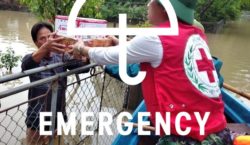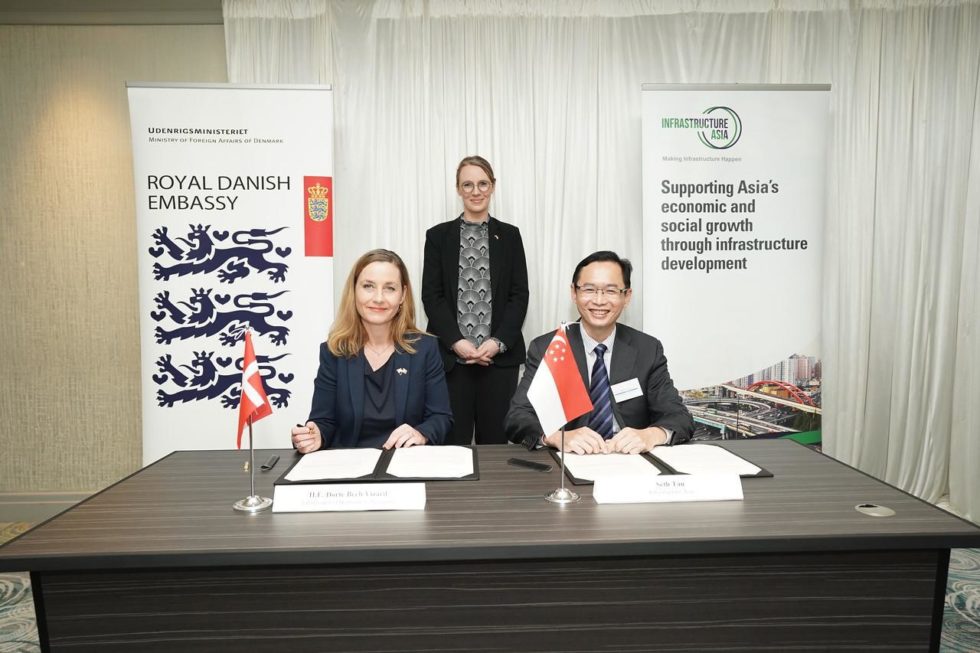
On 5 May some 150 representatives of the various stakeholders and Danish businesses representatives attended a webinar hosted by the Confederation of Danish Industry.
Representatives from the Danish missions in Singapore, Thailand and Vietnam outlined the situation in the respective countries on the topic: ‘Markets in the shadow of Covid-19’.
Dorte Bech Vizard, Danish Ambassador to Singapore and Chairman of the Danish Trade Council in South East Asia informed that Singapore’s ‘Circuit Breaker’ lockdown has been extended until 1 June. This follows a second wave with imported cases and a big spread among migrant labour communities.
“The government is confident to start signalling that the economy will open up before too long. And that is very good news indeed,” said the Ambassador.
When the opening up of Singapore starts during May it will happen slowly and gradually. Pharmaceuticals, petrochemicals and logistics, especially in maritime sector, will be first in line.
Things like tourism will come last and the opening of the border will happen with a gradual and cautious approach.
“New Zealand and Japan will probably be among the first countries to exchange visitors with Singapore.”
These are all countries in the Trans-Pacific Partnership (TPP).
“I do not see a big bang opening any time soon, and I don’t think Europe will be first on the list,” continued Dorte Bech Vizard.
Meanwhile in Vietnam the handling of the Covid-19 crisis is seen, at least statistically, as one of the best in the world.
The backbone of the Vietnamese strategy is to avoid that it enters Vietnam at all and by early May there had been less than 300 cases and zero deaths.
“When you put that in relation to the population here, which is around 97 million, it’s quite astonishing. Then you might of course ask how come? Vietnam has a physical border with China, one of the biggest partners when it comes to trade and investment. And there are lots of Chinese tourists coming etc. But the general evaluation, also among foreigners, including the WHO, the US, France and Germany that follow the development very closely and also have insights into the medical system here say that there’s no intentionally cooked numbers or so,” said H.E Kim Højlund Christensen, Danish Ambassador to Vietnam.
“Of course there might be some Covid-19 cases in the society that are not registered,” he added.
Vietnam was only under semi-lockdown during a brief period in April. However, over 130,000 people have so far been in quarantine. The reason behind the chosen path, which has been hugely successful so far, is that Vietnam’s health system would not be able to cope with any major community spread of a disease like this one.
Kim Højlund Christensen also pointed to that Vietnam has some very valuable experience from previous virus spreads, not least from SARS, back in 2003. Therefore Vietnam closed its border with China already in late January, and gradually stopped all flights between the two countries. Only official delegations, accredited diplomats and some high ranking experts are now allowed entry.
“We are in a situation now where all international flights have stopped and it’s not known when these will be taken up again. The backbone of the Vietnamese strategy is to have the situation under control so people entering Vietnam will have to go into 2 weeks quarantine. If they change that we have quite another situation and Vietnam will risk all the achievements they have accomplished so far, and the civil aviation authority has not yet given the green light,” explained the ambassador.
In Thailand the spread of Covid-19 has so far also been kept low. After some outbreaks the number of new cases is now down to single digits per day.
“The key takeaway is that the curve has stabilised and flattened out, according to WHO. More than 92 % of all cases, almost 3,000, have recovered. Only 1.8 % has died,” Chargé d’Affaires Anders Lønstrup Graugaard, Danish Embassy in Thailand reported.
“The optimism in terms of the corona virus curve relates to the consistently low number of cases, low transmissions and good treatment. And more tests are being carried out in the provinces. Thailand has a well-functioning healthcare system. We have seen the government prioritising testing of more vulnerable groups; most importantly migrant workers,” he continued.
Thailand is seeing a re-opening in phases where the government will reassess every 14 days about the progress.
“A major milestone will be 31 May, the current end date of the state of emergency. We hope to see further opening gradually.”
Singapore: trends will remain the same
Moving on to the political impact, the Danish Ambassador to Singapore informed that the upcoming general elections will likely to place within 2-6 months, as the government will want to reap the benefits from the points in popularity it has so far won during the Covid-19 crisis so far. There is large acceptance of the government’s approach, also sweetened by very generous packages that have been put in place.
 The economy is however hard hit, with a projected loss of between 1 – 4 percent in GDP in 2020. “But I think that is probably optimistic when you compare to private sector forecasts of a minus growth of up to 8 per cent, some pessimists even say minus 10. So we can for sure expect a deep and protracted recession in Singapore, the far worst since independence and far worse than during the financial crisis in 2008,” said Dorte Bech Vizard.
The economy is however hard hit, with a projected loss of between 1 – 4 percent in GDP in 2020. “But I think that is probably optimistic when you compare to private sector forecasts of a minus growth of up to 8 per cent, some pessimists even say minus 10. So we can for sure expect a deep and protracted recession in Singapore, the far worst since independence and far worse than during the financial crisis in 2008,” said Dorte Bech Vizard.
However, Singapore has very deep fiscal resources and has not needed to borrow any money to put in place the stimulus packages.
Job losses will likely increase and could negatively impact work opportunities for foreigners in Singapore.
“It will be an election theme in Singapore so we will see some tightening around how many foreigners should be here. It’s an area where there has always been some divide between the government’s approach and the general population. The government’s very rational view is that economic growth is not possible without attracting foreign talent and having foreigners as part of their work force both at the low wage and at the high end levels. But the population here has always been more skeptical,” explained the ambassador.
And as the coronavirus has spread within foreign workers dormitories, it has given rise to more xenophobia in Singapore, she added.
“It also has some spill-over effect to the high-end wage earners here; many Singaporeans in mid management level feel that many foreigners are here on better packages or higher salaries than them and find this quite offensive and irritating.”
“Looking ahead more long-term I belong to the group of people who believe that the trends we witnessed before the outbreak will be the ones to look out for also after,” continued Dorte Bech Vizard.
“We have talked about this for a very long time, and sometimes it becomes a platitude that we don’t put much stock in but we can see clearer and clearer that this is Asia’s Century. Asia now has half of the world’s GDP in purchasing power parity and we are seeing a great rise of an affluent and young middle class.”
The recovery post Covid-19 will include setbacks from some countries but those with the right policies in place, and less protectionism, will come out as winners.
“Growth will pick up in Asia and will be driven by a shift from foreign investment and production for export to a more domestic consumption and to infrastructure development.”
Another trend is to look at value chains with new eyes, taking into account rising costs, more political risk because of the conflict between China and the US and new trade barriers as consequence of that.
“Covid-19 adds more uncertainty to the political landscape and will accelerate this development. So we will see supply and transportation value chains become more flexible, more distributed and more nimble.”
“I think we will continue to see a lot of production facilities and strategic manufacturing operations move towards Southeast Asia. This had already started before Covid-19 and we’re seeing it accelerating now. The national interest in certain industries will blossom up so countries will be focusing heavily on having supply security in new ways and not just focus on the lowest cost in the future.”
In addition to mentioning the growth of digital business and fintech (where Denmark is really engaged with Singapore) the ambassador also pointed to that the green transition will not be scaled back in Singapore, and that they have the resources to continue regardless of the crisis. They also stand by several plans within the water sector.
“When it comes to the ability to become water independent or independent of supplies from Malaysia they have to deliver no matter what, so they will continue investments into the water sector.”
Vietnam: EU Free Trade Agreement
In Vietnam things are back to normal, with very few restrictions and a growth in GDP is still expected for 2020 of between 2-3 per cent (compared to 7 per cent in past two years).
Kim Højlund Christensen informed that Vietnam is mainly supplying some liquidity to the companies, as well as covering salary payments to laid-off workers for a three-month period.
“The government’s aid packages will be what will save the economy,” the ambassador said and continued: “International tourism is severely hit and of course that is a problem when it forms a large part of the 10-15 per cent of GDP generated from tourism in general. So Vietnam is now trying to encourage the Vietnamese to have vacation at home.”
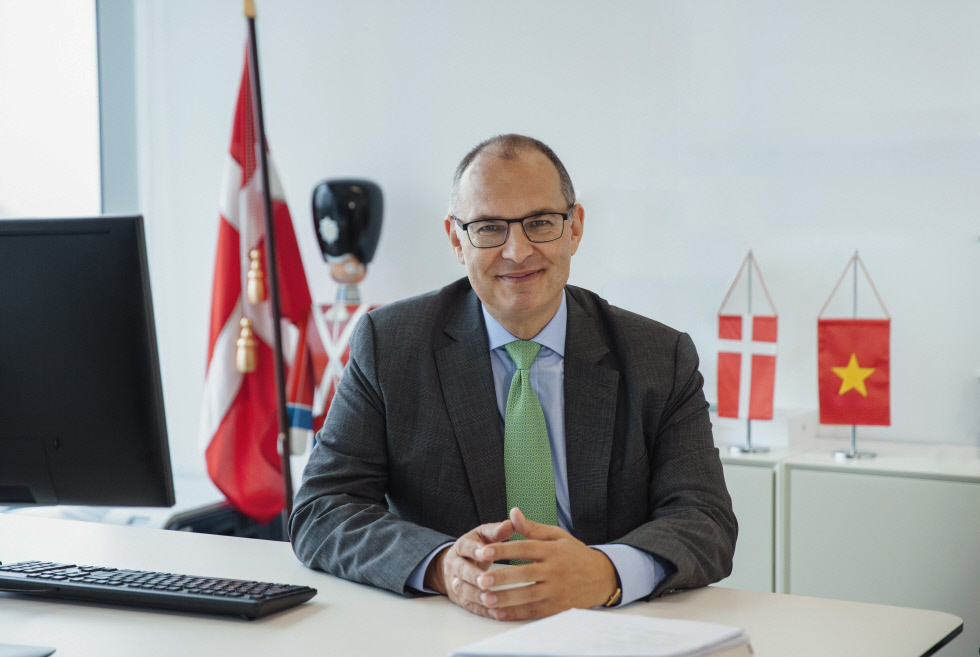
“Import and export activities are still possible and have been all along. It is expected that Vietnam will ratify the EU-Vietnam FTA very soon and all formalities on the EU side have already been taken care of.“
“International surveys have shown that the Vietnamese are among the most positive regarding a quick economic recovery after the Covid 19 crisis. 80 per cent in one of the polls actually believe that. I must admit I do not share that in full; it will all depend on the world markets. I also hope of course that Vietnam will recover very fast, but like in Denmark and other places we are dependent on that we can get the right input to our companies and that there are also markets at the other end for our outputs and our end products. But given the circumstances there is no doubt that Vietnam is doing well and has performed well so far.”
Denmark has identified the green economy as among the most import sectors in Vietnam, where the demand for more energy will increase by 10 per cent annually in the coming years. It is estimated that Vietnam will lack 10-20 billion kilowatts annually due to short supply. It will create great opportunities for renewable energy, which is relatively underdeveloped in this country. According to the plan it will contribute around 15 per cent of the total electricity generation, excluding hydro, by 2030.
“Also in the general urbanisation process Vietnam has a huge demand for other solutions in green growth areas such as water, waste, air quality, infrastructure, energy efficiency etc. already in the next few years and in the next decade. And there is a big wish for cleaner air in the big cities, and that cannot be ignored any longer.”
The healthcare sector is set to increase from around US 15.5 billion in 2018 to around 43 billion in 2028, where spending will triple in the next decade. ICT is also a special focus area for the Vietnamese government, where there are business opportunities in various areas such as data centres, smart cities, smart traffic systems, fintech, and cyber security.
Once the FTA is in place the food sector is among those that will see most reduction in tariffs.
Some Vietnamese production facilities will need some upgrading to cater for the European market and that could be an area of interest to Danish exporters. Especially pork farming, which is also undergoing a change from being family-operated to industrial farms, so also in that area we see a lot of opportunity for Danish suppliers of equipment.”
The Danish embassy is looking forward to 2021, partly because many activities have been postponed until then, but also as it is a very special year: “It will be the 50th anniversary of the establishment of diplomatic relations between Denmark and Vietnam. We will celebrate that with a number of high-level events, and of course provided that people will actually be able to travel at that point in time.”
Thailand: foreign investment remains high priority
The estimates by both IFM and Thailand’s national bank are that the country is expected to go into a recession in 2020, with a contraction of minimum 6.7% of GDP.
“Covid-19 has dramatically changed the economy, including the fiscal and political situation for Thailand in the near term. However, we have an economy in Thailand that is overall strong; it is robust due to its strong credit merits built up over the years. So, they have liquidity to go forward,” said Chargé d’Affaires Anders Lønstrup Graugaard.
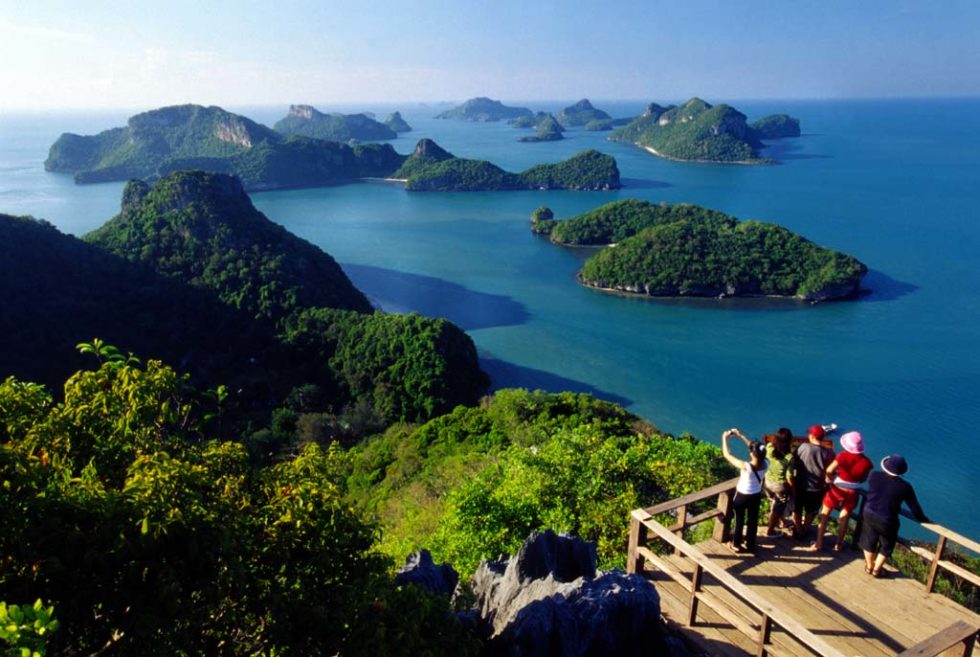
“Tourism accounts for 12 % of GDP and therefore it’s a quite tough time in Thailand, not least because of the informal sector, and for SMEs. On top of that we have seen a drought hitting the agricultural sector.”
“Also, the crisis has worsened the inequality in Thailand, which has always been significant and given that SMEs and family businesses are hit the most we see a very negative impact on the bottom 50 per cent work force in Thailand, which was already vulnerable before.”
“The good version is that Thailand for better or worse always seem to manage and pull it through. It is an impressive country when it comes to production and their focus and ambition. So we are quite optimistic from our side. And we see a fairly stable political situation with good productions facilities still, which will benefit the many Danish companies in the country.”
“Most Danish companies have an optimistic view. In addition, it remains a high priority for the Thai government to attract new foreign companies to come to Thailand and make sure that they stay on,” said Head of Trade Peter Sand.
More than 100 Danish companies are established in Thailand and the export from Denmark doubled from 2015 to 2019 (DKK 3.5 billion).
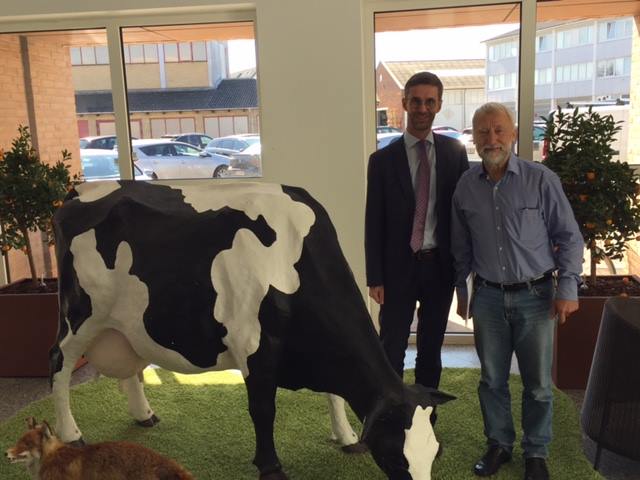
“But export is just one thing; the comprehensive value creation by the many companies in Thailand comes on top. Denmark remains a significant investor in Thailand. By the end of 2018 the total amount of direct investment into Thailand amounted to approximately DKK 4 billion.”
Peter Sand highlighted six structural issues of relevance to businesses: The retail sector has been hit severely, with reduced private spending. Manufacturing and supply chain interruptions have been seen. Transport and logistics: a decline in activity is expected later this year. Many investors are seeing a risk of running out of liquidity. Transfer from head office of money may not be possible if they face a similar problem back home. Investment: they are delaying planned business expansions or do not plan for new investments for now. There is a risk that layoff of some employees cannot be avoided in the near future.
A few investment opportunities were highlighted: Thailand depends on energy and securing proper environmental solutions and coping with water (flooding risk remains a serious issue).
“There’s a need for management of water resources, where Danish companies can indeed chip in.”
“Energy efficiency in buildings has a huge potential; mainly for hotels and malls. Many Danish companies have the chance to offer their solutions in that field.”


